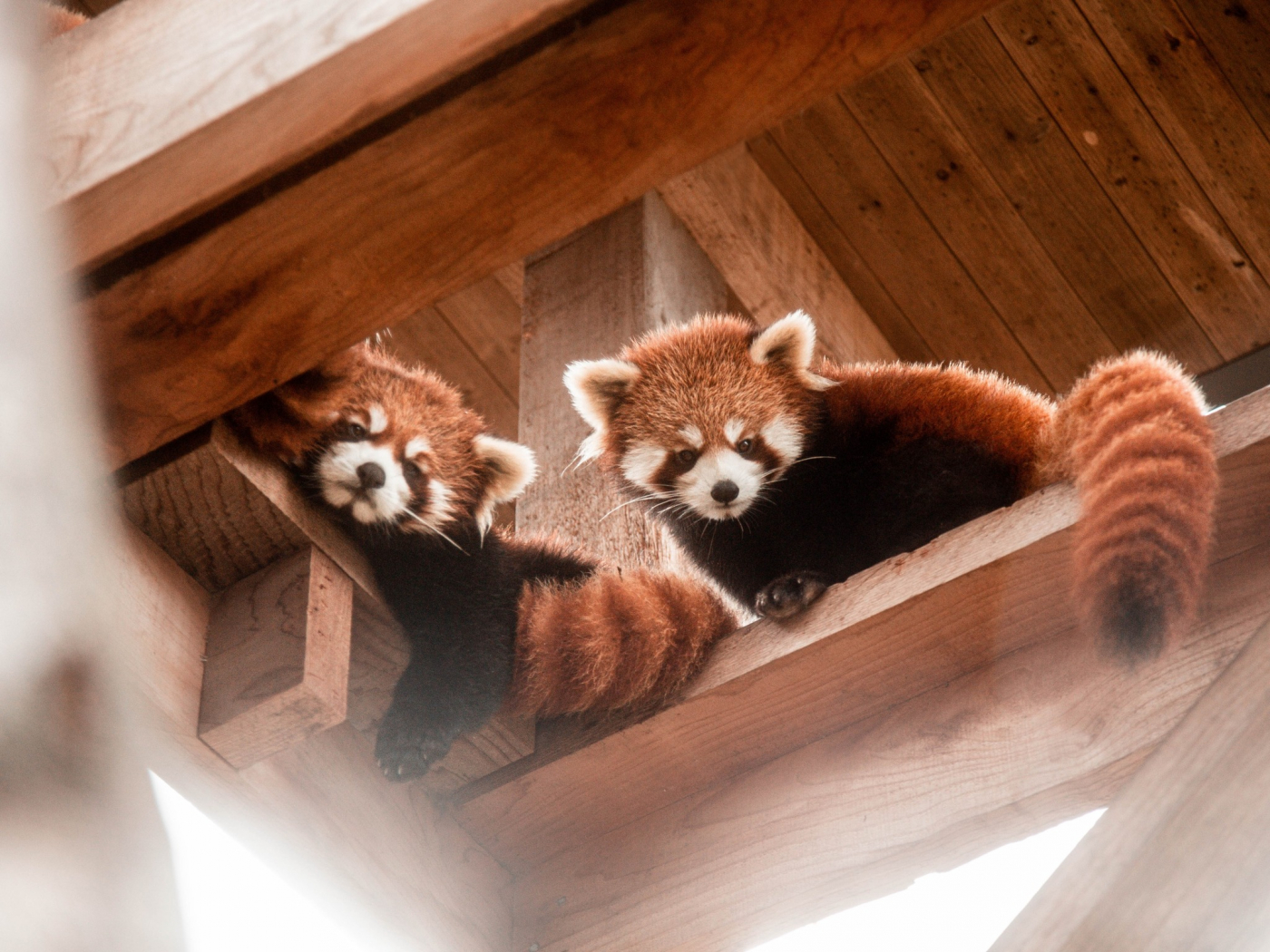We are so excited to announce the 1st official birthday of the first two B.C. born Red Panda cubs Maple and Mei Mei. They were born at the Greater Vancouver Zoo on June 14th, 2022, to mother Sakura and father Arun. The Red Pandas at the Greater Vancouver Zoo are part of a global conservation program called the Species Survival Plan.
Red pandas are an important species because they help keep balance in their ecosystem. Their native range is in Northern Myanmar, India, Nepal, Bhutan, and into the West Sichuan and Yunnan Provinces of China. Red Pandas are also the last surviving species in their taxonomic family; saving them preserves a piece of our world’s national heritage. The red panda has dense reddish-brown fur with a black belly and legs, white-lined ears, a mostly white muzzle, and a ringed tail. They have curved, retractable claws and a thumb-like bone that helps them grip leaves, fruit, and narrow tree branches. A red panda’s diet is 90% bamboo, however they digest it quite poorly so they have to eat a lot of it. Their thick fur provides insulation from the cold. Red Pandas typically live solitary lives. While usually fairly quiet, they do make a lot of interesting sounds; most notably something called a “huff-quack” which sounds like a pig snort and a duck quack. They also make little squeals and twitters. Red pandas are crepuscular, which means they are most active at dawn and dusk. On average, they spend about 45 percent of the day awake.
Red pandas breed from January through March, with babies being born in the late spring. During this time bamboo shoots and leaves are the most tender and digestible food and this helps the mother get adequate nutrition while raising her babies. Females create nests in hollow trees, tree roots, and small enclaves, and pull leaves and other soft substrate into the nest.
On the day we had planned to do an ultrasound was the day we discovered the babies! The babies (cubs) were born on June 14, 2022. We kept keeper interaction to a minimum to allow her to raise her cubs as naturally as possible. Sakura is an excellent mother, very protective of her cubs. The cubs will be at our zoo for at least 1 year, which is the amount time they stay with mom in the wild. After this time the Species Survival Plan may pair them up with potential mates at other facilities. This is a huge success for the SSP and the ongoing conservation efforts of this endangered species.
“SSP Programs are led by expert advisors who cooperatively work together to maximize genetic diversity, appropriately manage the demographic distribution and long-term sustainability of TAG recommended Animal Programs within AZA member institutions. Each SSP Program manages the breeding of a select species or sub-species by collaborating with the AZA Population Management Center (PMC), Reproductive Management Center (RMC), Program Leaders, and Institutional Representatives (IRs) from each participating institution to develop an SSP Breeding and Transfer Plan. Breeding and Transfer Plans summarize the current demographic and genetic status of the population, describe the Animal Program’s management designation, and recommend breeding pairs and transfers. These Plans are designed to maintain a healthy, genetically diverse, and demographically stable population for the long-term future.” – AZA (Association of Zoos and Aquariums).
Conservation efforts here at the Greater Vancouver Zoo continue to yield exciting results. Conservation, education, and dedication to our animals is of utmost importance to us here.
Over the last year we have seen these cubs come completely into their own, develop wonderful individual personalities and grow to be as big as mom and dad! This amazing conservation success story serves to remind us that the future is bright for endangered species as long as we can continue to face these problems head on by doing research, continuing species repopulation efforts, and educating the public on the importance of not some, but all animal species.
We are so very excited to be able to celebrate these twins’ birthday with them as we spoil them with enrichment toys and special treats, and we can’t wait to see what the future holds for them.





